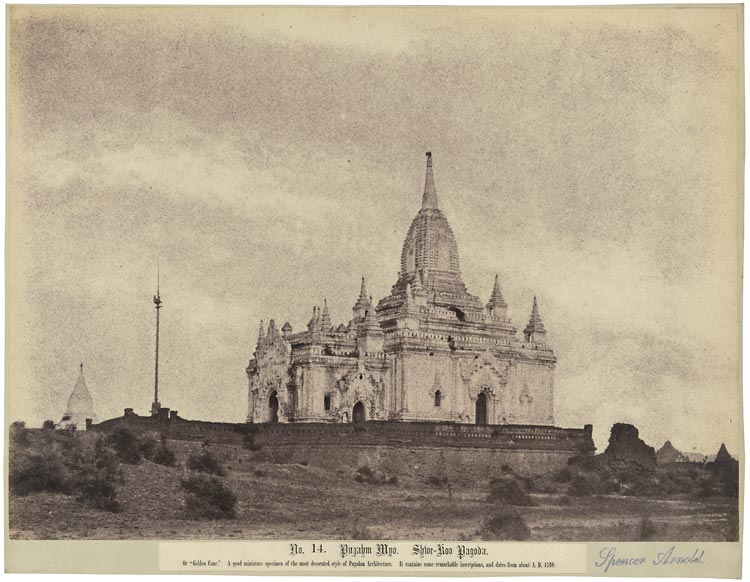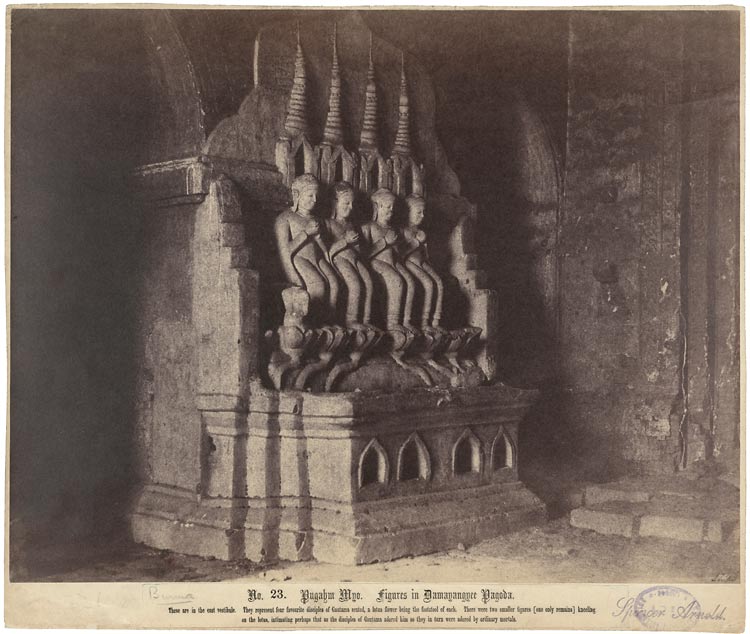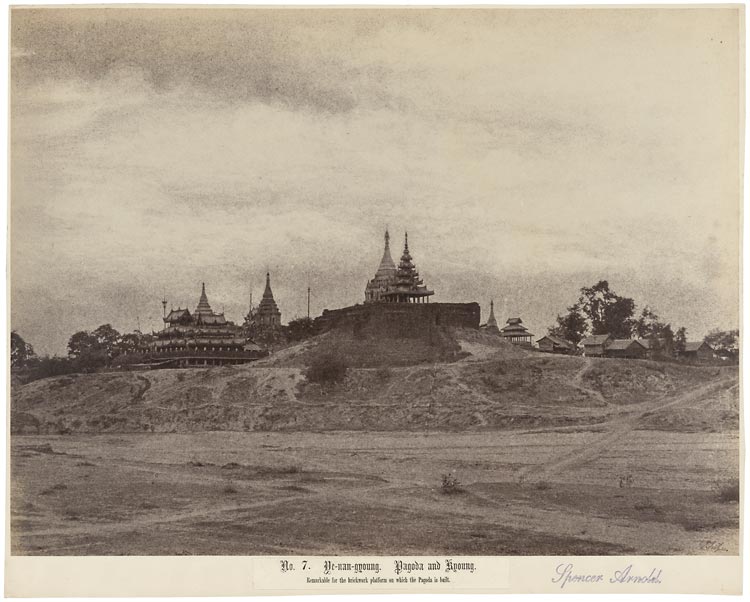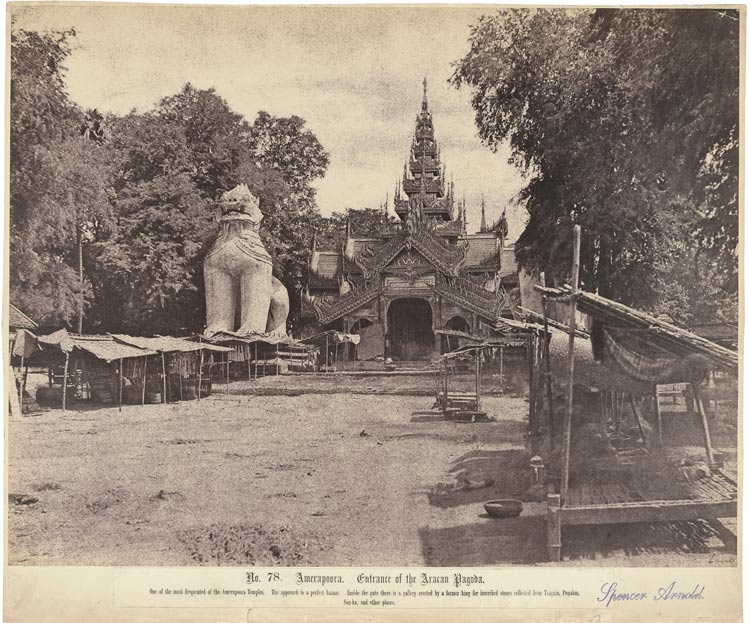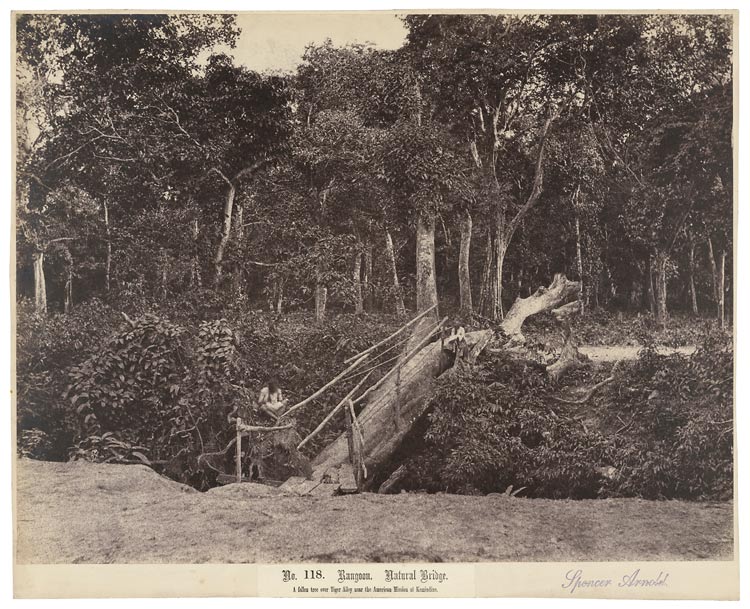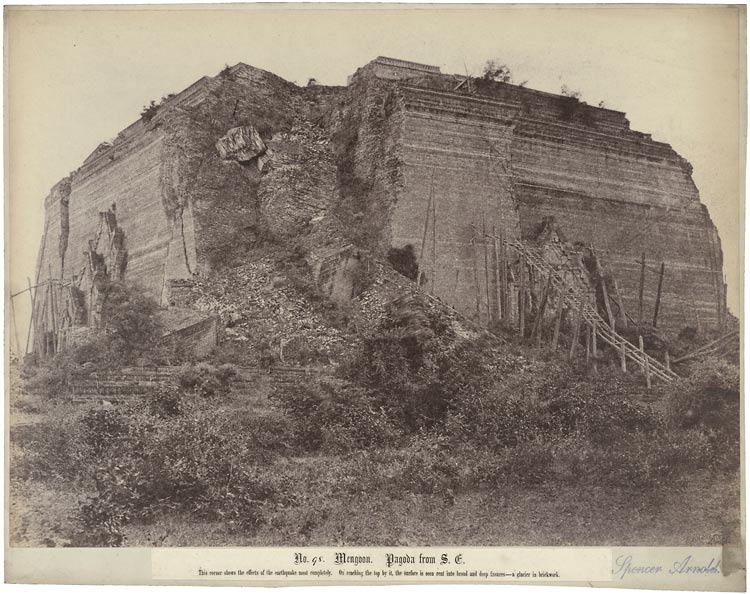Even today India and the Far East are not the most hospitable climates for photographers in which to work, so the pictures taken by Captain Linnaeus Tripe – less than twenty years after the invention of photography – are quite an achievement. Though highly regarded at the time, Tripe’s work has until recently been somewhat overlooked but recent re-evaluation now ranks Tripe alongside his better-known contemporaries John Murray and Samuel Bourne. The Hulton Archive’s files contain vintage prints by all these photographers, but the set of Tripe’s Views of Burma published in 1857 are amongst the rarest.
Born in 1822 in Devonport, England, Linnaeus Tripe was the ninth of twelve children, who included Theophilus, Octavius, Lorenzo, Septimus and Algernon! Tripe was only seventeen when he joined the East India Company in 1839 but had risen from a humble ensign to honorary Major General when he retired in 1875. He took up photography as a hobby in 1853 and won the first-class medal at the Madras Exhibition of 1855. The East India Company was already showing interest in photography as a less expensive and quicker way to record antiquities than commissioning traditional artists. In 1855 they sent a mission to Ava, Burma, and Tripe, probably as a result of his success in the Madras Exhibition, was appointed the official photographer.
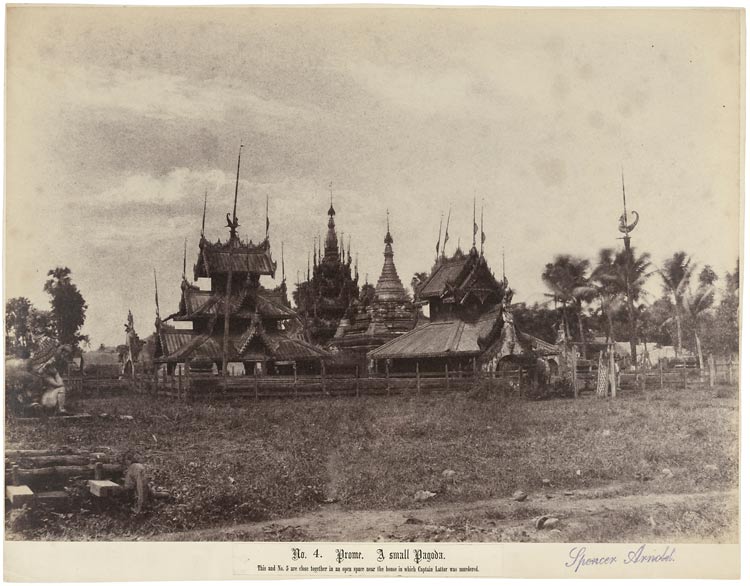
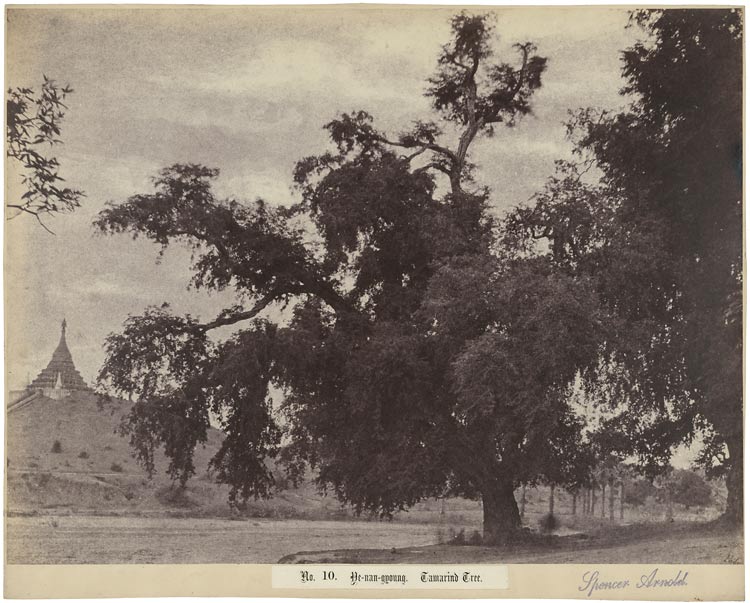
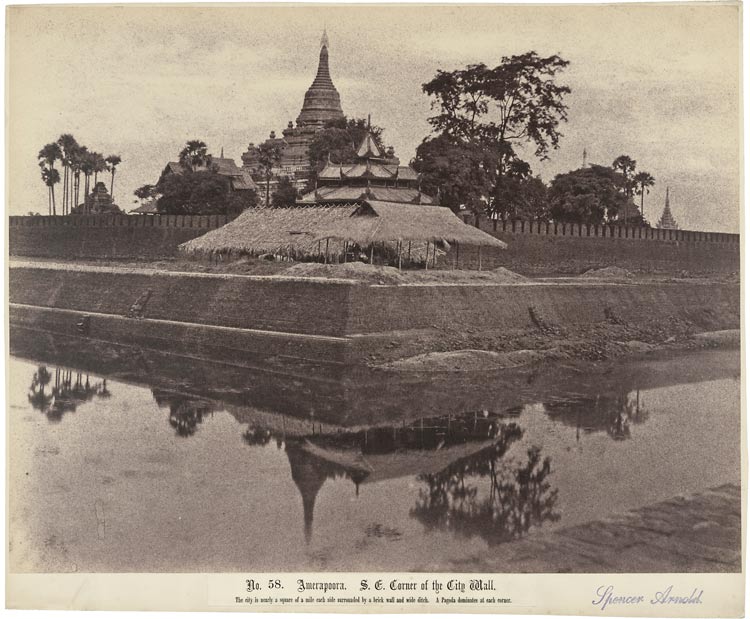
These early pictures vary in quality – the trip lasted three and a half-month but because of sickness and bad weather Tripe had only 36 days to photograph the region. This was indicative of the problems of the 19th century photographer in the East: heat, dust, and flies in summer, damp humid conditions and sickness during the monsoon months, and the rapid deterioration of photographic chemicals, and difficulties procuring and transporting of bulky equipment created quite a challenge all round. For many of these reasons Tripe preferred the waxed paper negative process but even this was not without its difficulties and Tripe complained that the wax often melted in the heat to leave spots on the first prints “so as to spoil them.”
Tripe printed 50 boxed sets of 120 prints selected from the trip for The Government of India – a total of over 6 000 prints. The skies of these Burmese views have a pronounced granular texture and lack of definition, a fault typical of early negatives since different exposures were needed to record sky and solid objects. Tripe would either black out the sky on his negatives completely so it printed white, dub over artificial clouds or settled for the grainy “salt and pepper” effect. However, the composition and sharpness of the images show a technical mastery of the calotype process and a great visual awareness and sympathy for his subject.
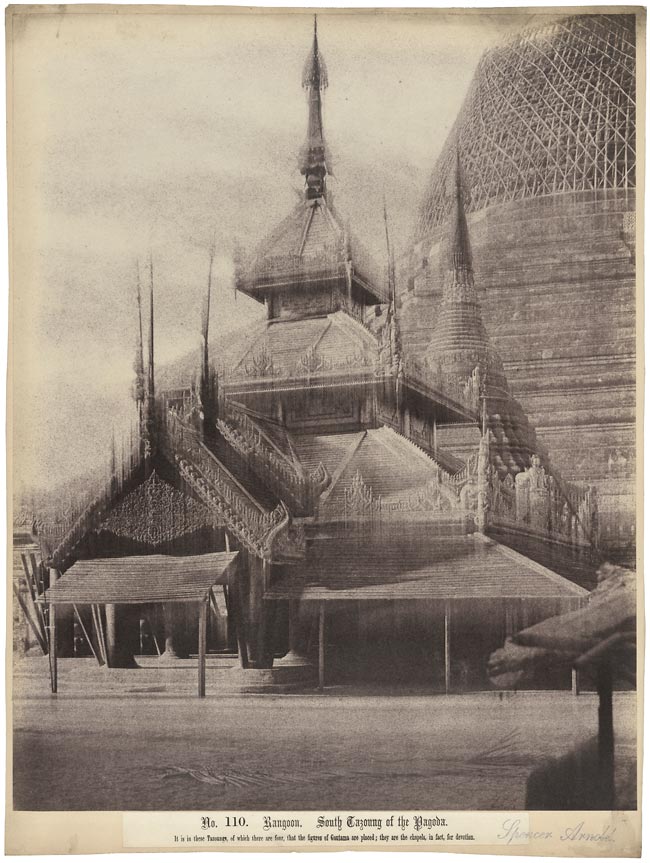
Tripe was appointed official photographer to the Government of India in 1856. His next commission was to photograph the southern states of the province, recording important items of interest to historians, antiquaries, and architects. He set out in December 1857 taking four bullock carts to transport his equipment on a trip that lasted seven months – much of it during the difficult hot season. Tripe produced 275 paper negatives, 16 collodion glass negatives and 160 stereographs on glass. His main subjects included temples, palaces, forts, and the Elliott Marbles in Madras. However, following the Indian Mutiny on 1857 the British government had taken over the rule of India and the new Governor of Madras soon ordered the closure of the Photographic Department on grounds of excessive costs. Tripe was allowed to finish printing but was not permitted to undertake any new commissions.
Tripe continued to photograph for pleasure and his last known images were taken in 1870, while stationed in Burma. In 1873 he returned to Devonport where he was active in local charities and collected shells and corals, some of which were acquired by British Museum after his death in 1902. Hulton Press acquired the series of Burma Views from the collector and picture agent Augustin Rischgitz in 1946, which now form part of the Hulton Archive, a division of Getty Images.
